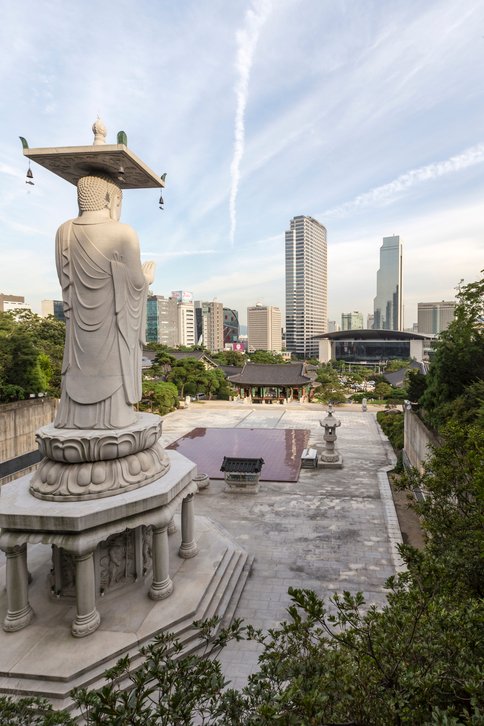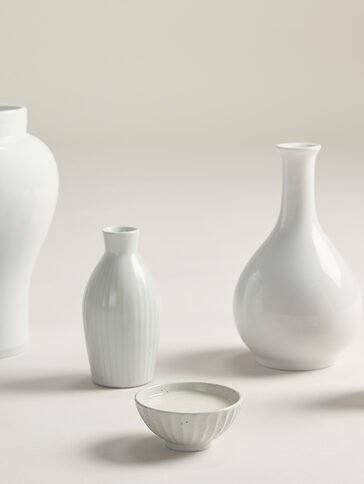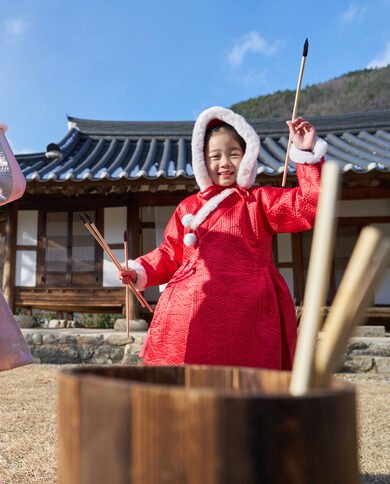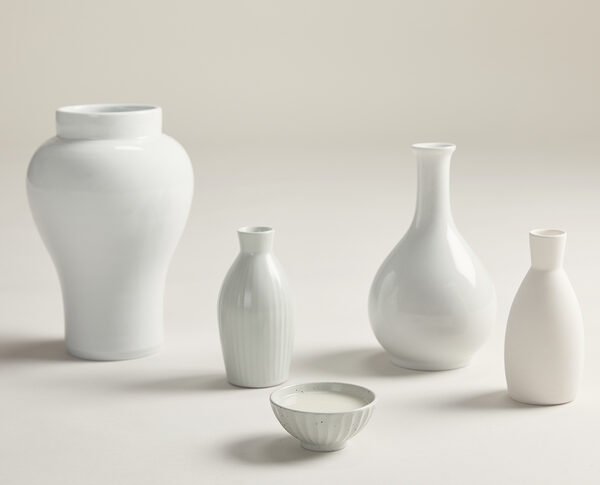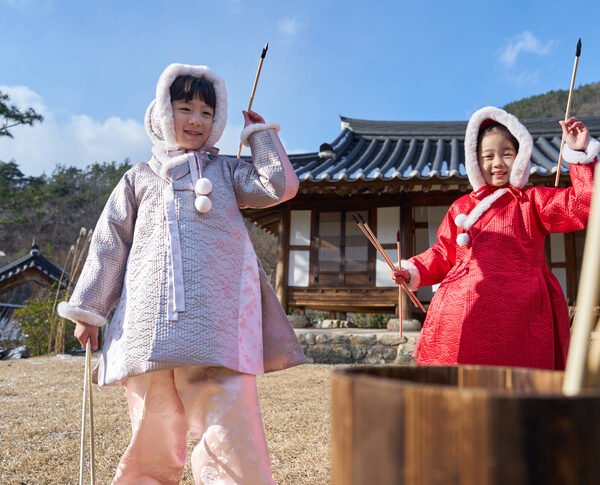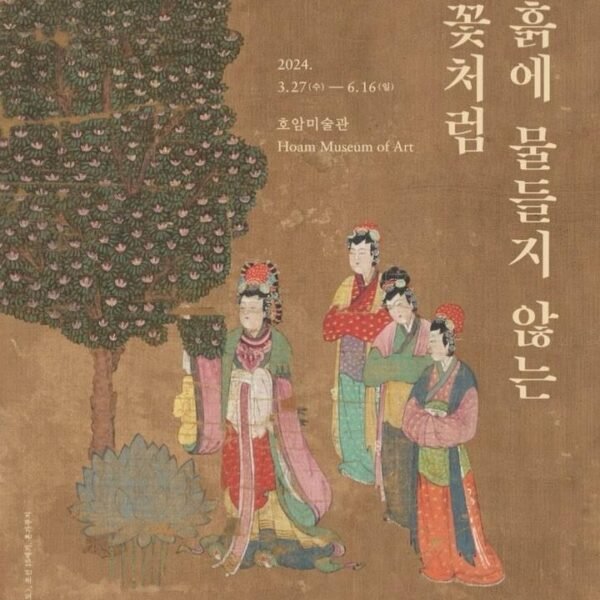Seoul, the bustling capital of South Korea, is not only a modern metropolis but also a repository of rich cultural and spiritual heritage. Within its dynamic landscape, Seoul’s Top 10 Temples, remarkable temples stand as serene sanctuaries, each with its own unique history, architecture, and spiritual significance. In this journey, we will traverse the spiritual tapestry of Seoul, unveiling the tales of Bongeunsa, Jogyesa, Gilsangsa, Botaesa, Bongwonsa, Doseonsa, Cheongryangsa, Hoapsa, Daeseongsa, and Geumsansa.
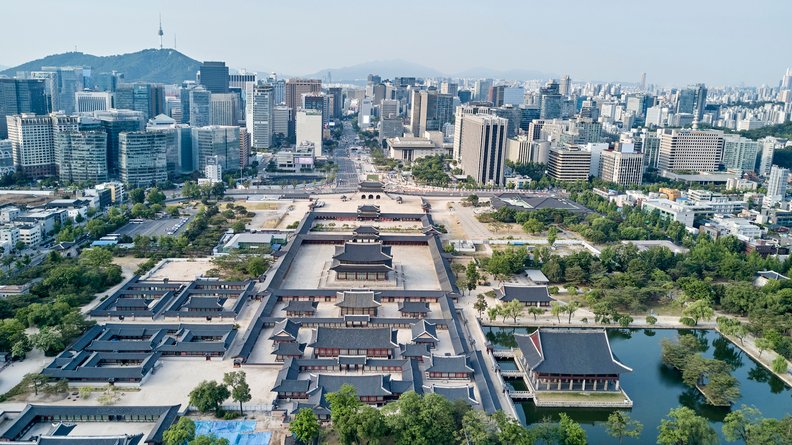
1. Bongeunsa: A Tranquil Oasis in the Heart of Seoul
Nestled amidst the urban chaos of Gangnam, Bongeunsa emerges as a tranquil oasis. Founded over 1,200 years ago during the Silla Dynasty, this temple showcases a harmonious blend of traditional Korean and modern architectural styles. Beyond its aesthetic allure, Bongeunsa hosts a plethora of cultural and spiritual activities, making it a haven for seekers of serenity.
Bongeunsa, located in the heart of Seoul, is a historic and well-known temple that stands out for its accessibility. Situated in Samseong-dong, Gangnam-gu, near the bustling business district of Teheran-ro, Bongeunsa is easily reachable with a nearby subway station. Founded during the Shilla Dynasty, it played a central role in the revitalization of Buddhism during the Joseon Dynasty. Today, Bongeunsa’s spacious grounds provide a tranquil retreat for urban dwellers.
Throughout the seasons, various flowers bloom on the temple grounds, and on Buddha’s Birthday, a lantern festival attracts many visitors eager to capture the picturesque scene. Take a break from the busy city life and enjoy a stroll or meditation at Bongeunsa, which offers a serene escape right in the middle of the city.
Address: 531 Bongeunsa-ro, Samseong 1(il)-dong, Gangnam-gu, Seoul, South Korea
Phone: +82 2-3218-4800
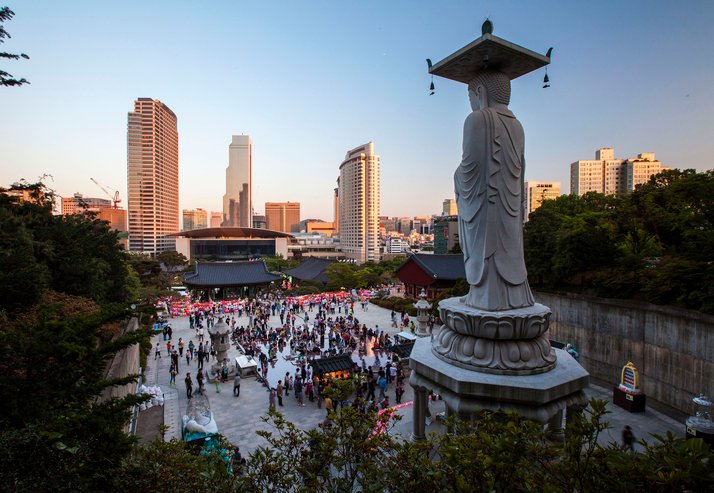
2. Jogyesa: Embracing the Zen Spirit in Seoul
Situated in the cultural heart of Insadong, Jogyesa is the chief temple of the Jogye Order, the largest Buddhist sect in Korea. Rooted in the late 14th century, Jogyesa’s main Dharma Hall stands as a symbol of Zen Buddhism, adorned with vibrant lotus lanterns during the annual Lotus Lantern Festival. This temple actively engages in community events, fostering unity and cultural exchange.
Jogyesa, located in the heart of Seoul along with Bongeunsa, is a temple with a modest size but holds significance as the headquarters of the largest Buddhist order in Korea. Despite its compact scale, Jogyesa boasts a grand and beautiful Daeungjeon (Main Dharma Hall) comparable to Gyeongbokgung Palace’s Geunjeongjeon. At the entrance, a massive single-pillar gate serves as the main gate, displaying a large plaque identifying Jogyesa as the central headquarters of Korean Buddhism. A natural monument, the 9th White Pine Tree, stands on the temple grounds.
Across the street from Jogyesa, you’ll find a bookstore selling Buddhist literature, shops offering Buddhist items, and places that provide temple stay programs. Additionally, there are restaurants serving temple cuisine. Many of the ingredients used in these dishes are grown or made by the monks themselves. Even if you’re not a Buddhist, if you’re interested in vegetarian or temple cuisine, it’s worth a visit. Explore Jogyesa, the central hub of Korean Buddhism, and savor the unique flavors of temple cuisine.
Address: 113-10 Bogukmun-ro, Jeongneung-dong, Seongbuk-gu, Seoul, South Korea
Phone: +82 2-914-2828

3. Gilsangsa: Nurturing Mindfulness Through Nature
In the foothills of Bukhansan National Park, Gilsangsa offers a retreat into nature. Surrounded by serene landscapes, it provides a sanctuary for meditation practices and retreats. Committed to environmental sustainability, Gilsangsa actively participates in community initiatives, harmonizing humanity with nature.
Gil-sang-sa, established in December 1997, is a relatively young temple with a history of around 20 years. Despite its short history, Gil-sang-sa has garnered many stories that are shared among those who visit. Originally known as Dae Won Gak, the temple’s owner, Kim Young-han, was inspired by the spirit of non-attachment (musho-yu) advocated by Zen Master Seung Sahn. In response, Kim Young-han generously donated all the buildings and land, leading to the establishment of Gil-sang-sa.
Unlike traditional temples, Gil-sang-sa, not originally intended as a temple, has a unique characteristic of maintaining its structures without aging, resembling more of a themed park. The temple, while modest in size, features a charming and well-decorated compound that exudes a sense of warmth and loveliness.
The temple complex also includes the Gil-sang-sa Library, founded by Zen Master Seung Sahn, housing Buddhist and general literature. The library underwent renovation in 2016 and now operates as a book cafe named Daranida-won, serving as a multi-functional cultural space with amenities for relaxation and reading. Take a moment to visit Gil-sang-sa, enjoy a cup of tea, and contemplate the spirit of non-attachment.
Address: 68 Seonjam-ro 5-gil, Seongbuk-dong, Seongbuk-gu, Seoul, South Korea
Phone: +82 2-3672-5945
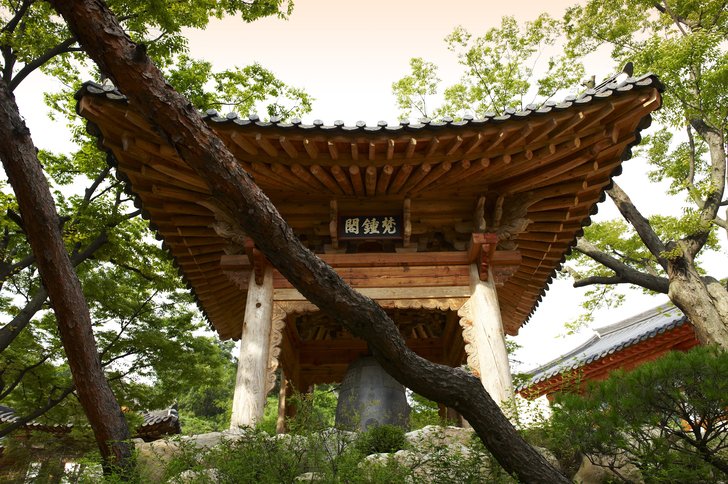
4. Botasa: Exploring Artistic Expression in Buddhism
Perched on the slopes of Inwangsan Mountain, Botasa is a haven for art enthusiasts. The temple seamlessly integrates artistic features and sculptures with its natural surroundings, creating a space where spiritual contemplation and artistic appreciation converge. Regular events and exhibitions invite the community to explore this unique fusion.
Botasa, though small in scale, is a temple where you can encounter two nationally designated treasures. Carved into the cliff behind the main hall of Botaesa, the giant statue of Maitreya Bodhisattva stands at approximately 5 meters, believed to be a piece from the Goryeo period. Despite the passage of time, the realistic depiction continues to evoke a mysterious atmosphere, making encountering this treasure in the heart of the city feel like stepping into another world.
Another treasure, the Gilt-bronze Bodhisattva Statue, is designated as Treasure No. 1818 and is estimated to have been crafted during the Joseon period. Although small, the statue is ornate and well-preserved, showcasing the skill of the craftsmen from the past. Botaesa, hidden in an alley like a concealed treasure, is easily accessible by public transportation. Embark on a temple experience at Botaesa, treating it like a journey to discover hidden treasures.
Address: 7 Anam-dong 5-ga, Seongbuk-gu, Seoul, South Korea
Phone: +82 2-923-4067

5. Bongwonsa: A Historical Gem Nestled in Nature
Founded in 889, Bongwonsa holds a significant place in Korean history. Enduring wars and conflicts, the temple stands as a historical gem, preserving its cultural heritage. The architectural highlights and symbolic elements tell a tale of resilience and cultural continuity.
Bongwonsa, the head temple of the Taego Order in Korea, has a deep history that dates back to the Three Kingdoms period. Originally founded during the Three Kingdoms era, it suffered damage during the Japanese invasions of Korea (Imjin War), but was later rebuilt during the Joseon Dynasty. Although the plaque personally written by King Yeongjo is lost, a plaque inscribed by Jeong Do-jeon, who played a pivotal role in the founding of the Joseon Dynasty, still remains, providing a glimpse into Bongwonsa’s historical significance.
Despite undergoing reconstruction due to various wars, Bongwonsa may not boast grandeur, yet its faded paintwork exudes a subdued elegance, showcasing the temple’s historical depth. One should not overlook the lotus flowers at Bongwonsa, as they grace nearly every corner. The lotus symbolizes cultivating compassion and living for the benefit of others, conveying the lesson of a life realized by the awakened. Visit Bongwonsa to experience the fragrance, purity, and enduring beauty of lotus flowers, and reflect on the essence of life.
Address: 1 Bongwon-dong, Seodaemun-gu, Seoul, South Korea
Phone: +82 2-392-3007
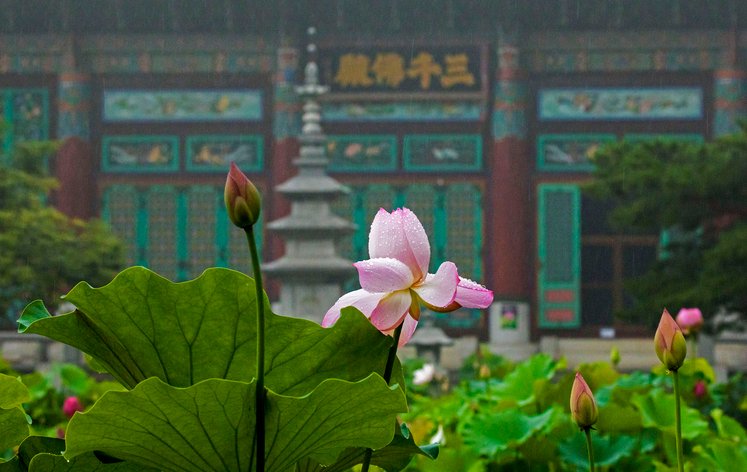
6. Doseonsa: Discovering the Wisdom of Doseon
Doseonsa, named after its founder Doseon, focuses on preserving ancient Buddhist scriptures. The temple serves as a center for education, offering programs and seminars that delve into the wisdom imparted by Doseon. It stands as a testament to the intellectual legacy within Seoul’s temple landscape.
Dosonsa is located to the west of Uido in Seoul, and when you ascend along the valley towards the highest peak of Bukhansan, Baegundae, for about 1 km, you’ll reach the temple. Dosonsa houses various artifacts, with one of the notable ones being the statue of Maitreya Buddha. To ensure accessibility, there’s an elevator for convenient viewing, allowing even elderly visitors to enjoy the cultural treasures. Additionally, recognizing that climbing the mountain might be challenging, there is a shuttle bus service available.
Dosonsa is rich in scenic spots throughout its grounds. The panoramic view of Seoul from the middle of Bukhansan is particularly impressive. The ever-changing appearance of Bukhansan across different seasons adds to the beauty of each visit. At the entrance of Dosonsa, you’ll find Doson Dawon, a tea house. After admiring the timeless beauty of the millennium-old temple, enjoying the Seoul skyline and Bukhansan’s scenery, take a moment to savor a cup of hot tea at Doson Dawon.
Address: 264 Uido, Gangbuk-gu, Seoul, South Korea
Phone: +82 2-993-3161
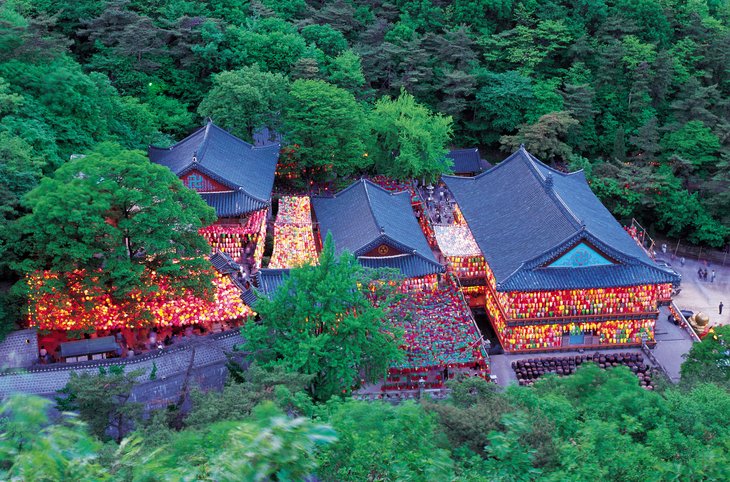
7. Cheongryangsa: A Spiritual Retreat on the Mountains
Nestled in the mountains, Cheongryangsa’s geographical location and natural surroundings make it a spiritual retreat. Monastic life, daily rituals, and popular hiking trails offer visitors a unique blend of tranquility and physical activity. The temple serves as a haven for those seeking spiritual elevation amidst nature.
Cheongnyangsa, which is said to have influenced the naming of Cheongnyangri, is a temple originally established in the late Silla Dynasty. The present location in Cheongnyangri is not the original site; it was relocated when Empress Myeongseong created Hongneung. The famous poet Han Yongun also stayed here for a period. While the history is deep, the temple has been gradually expanded and modified since its relocation, resulting in its unique current appearance.
To appreciate the entire temple, you need to navigate through staircases and alleyways as if exploring a maze. Passing through the gate hidden within high-rise apartments, you’ll encounter the distinctive Avalokiteshvara Hall with its stone exterior and unique Korean signboards.
To fully enjoy the temple, take your time exploring and moving cautiously through the various staircases and alleyways. When looking down from the Manyangsujeon, you’ll witness a unique sight of the roofs of the structures all huddled together, seemingly hidden within the tall apartment buildings. Revel in the unique architecture and meticulously appreciate the temple, almost like a treasure hunt.
Address: 61 Cheongnyangri-dong, Dongdaemun-gu, Seoul, South Korea
Phone: +82 2-962-2711
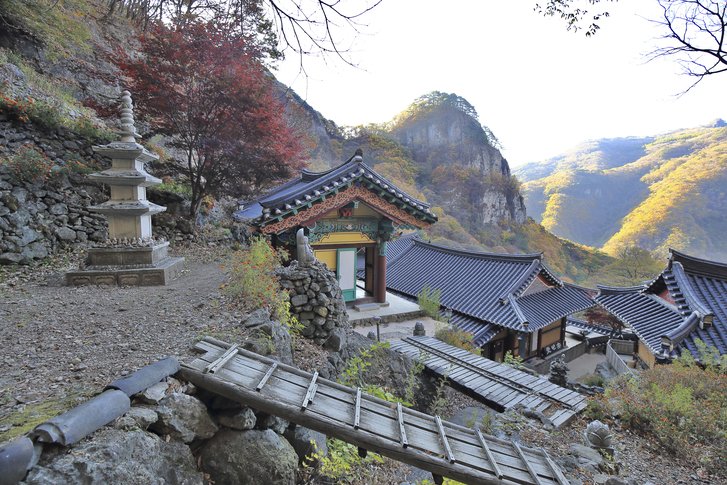
8. Hoapsa: Bridging the Past and Present
Hoapsa, with its rich historical context, plays a crucial role in bridging the past and present. Engaging in restoration efforts and modern adaptations, Hoapsa remains relevant in contemporary society. Its historical significance intertwines with ongoing community engagement, making it a living cultural heritage.
Hoapsa is located at the foothills of Samseongsan Mountain, the main peak of Gwanaksan in Seoul. Legend has it that due to beliefs in the overflowing tiger energy on Samseongsan, causing harm to people, a temple was built at the point representing the tail of a tiger to suppress this energy, hence the name Hoapsa. The temple is small and compact, providing a panoramic view of the surroundings. Situated at the starting point of the Gwanaksan Circuit Trail, it’s an ideal temple to visit before ascending the mountain. Although it may not have extensive attractions like larger temples, Hoapsa carries symbolic significance with its representation of stepping on the tail of a tiger.
Even those less experienced in mountain hiking can easily find Hoapsa along the circuit trail. For seasoned hikers, ascending Samseongsan offers a chance to enjoy the Seoul skyline. Visit Hoapsa for a unique experience, stepping on the tiger’s tail and absorbing the mystical energy associated with it.
Address: 234 Siheung 2-dong, Gwanak-gu, Seoul, South Korea
Phone: +82 2-803-4779
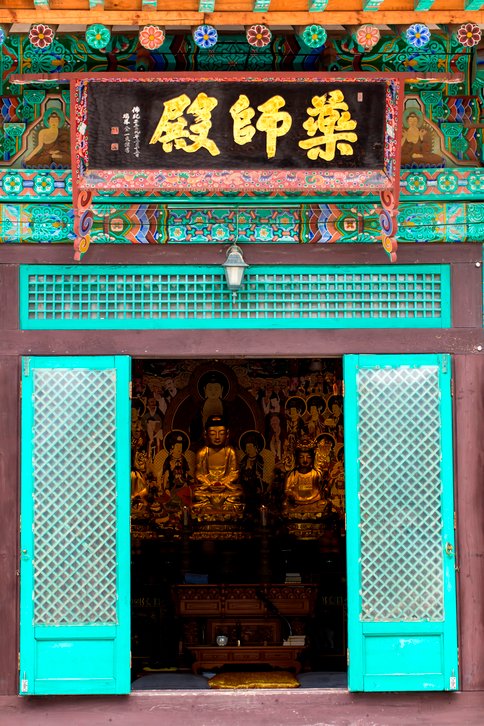
9. Daeseongsa: Embracing Grandeur in Seoul
Daeseongsa stands out with its grandeur architecture. Hosting various rituals and ceremonies, the temple is a focal point for community engagement and outreach. Its imposing presence adds to the diverse spiritual landscape of Seoul.
Located along the Seoul Trail, a beautiful route embracing the outskirts of Seoul, Daeseongsa is part of the Seoul Dulle-gil (Seoul City Wall Trail) and is renowned as a tranquil and healing spot within the city. It offers stunning views of the Seoul cityscape. Though with a deep historical origin dating back to the Baekje Dynasty, the temple was destroyed during wars and has been reconstructed to its present state. Despite its limited space, Daeseongsa captivates visitors with its splendid decorations and the Wooden Seated Buddha, a designated cultural property of Seoul.
Ascending the stairs, you’ll come across the charming three-story stone pagoda with miniature figurines, the Yaksa Yeorae Samcheungseoktap. Along the surrounding trails, you can climb to the top of Mt. Umyeon, where you’ll find the Pagoda of Hope. Inside Daeseongsa, there is also a spring, providing refreshing water for a leisurely break.
Address: 49 Nambusunhwan-ro 328-gil, Seocho-dong, Seocho-gu, Seoul, South Korea
Phone: +82 2-583-1475
10. Geumsansa: Unveiling the Golden Legacy
The name Geumsansa, meaning “Golden Mountain Temple,” holds profound symbolism. This temple is adorned with artistic treasures and artifacts, contributing to cultural exchange and tourism. Geumsansa’s golden legacy unfolds as a captivating chapter in Seoul’s spiritual narrative.
Located in Gugi-dong, Jongno-gu, with a direct view of Inwangsan Mountain, Geumseonsa is a temple that serves as the first gateway to a transcendent world along the Bibong Course of Bukhansan National Park. As you ascend from the entrance near Gugi Tunnel, passing through the Bukhansan National Park, you’ll encounter Geumseonsa’s main gate, a triad gate, marking the entrance to the world beyond. Beyond a 200-year-old pine tree and climbing 108 steps, you’ll reach Daejeokgwangjeon, the main hall where the central Buddha image is enshrined. The temple is neatly situated above a stream with a beautiful bridge called Hongye Mun.
Geumseonsa, with a history of over 600 years, operates a temple stay program that allows visitors to experience various aspects of traditional Korean Buddhist culture. Here, you can engage in meditation practices and create Buddhist crafts. Geumseonsa offers both day-long and overnight temple stay programs, providing an opportunity to train the mind and learn about Buddhist culture amidst the natural surroundings of the mountain temple.
Address: 137 Bibong-gil, Jongno-gu, Seoul, South Korea
Phone: +82 2-879-5618
Conclusion
Seoul’s top ten temples collectively paint a vivid picture of the city’s spiritual depth and cultural richness. From the serene Bongeunsa to the grandeur of Daeseongsa and the golden legacy of Geumsansa, each temple contributes to the harmonious blend of tradition and modernity that defines Seoul.
FAQs
- How can I participate in cultural activities at Bongeunsa?
- Bongeunsa regularly organizes cultural events. Check their official website for upcoming activities and participation details.
- Are there guided meditation sessions at Gilsangsa?
- Yes, Gilsangsa offers guided meditation sessions and retreats. Check their schedule for more information.
- Can I attend art exhibitions at Botaesa without any prior knowledge of Buddhism?
- Absolutely! Botaesa welcomes all visitors to explore the intersection of art and spirituality.
- What historical artifacts can I find at Bongwonsa?
- Bongwonsa houses various historical artifacts, including ancient scriptures and cultural relics. A guided tour can provide detailed insights.
- Is there an entrance fee for visiting Daeseongsa?
- Most temples in Seoul do not charge an entrance fee. However, consider making a donation to support their maintenance and activities.

